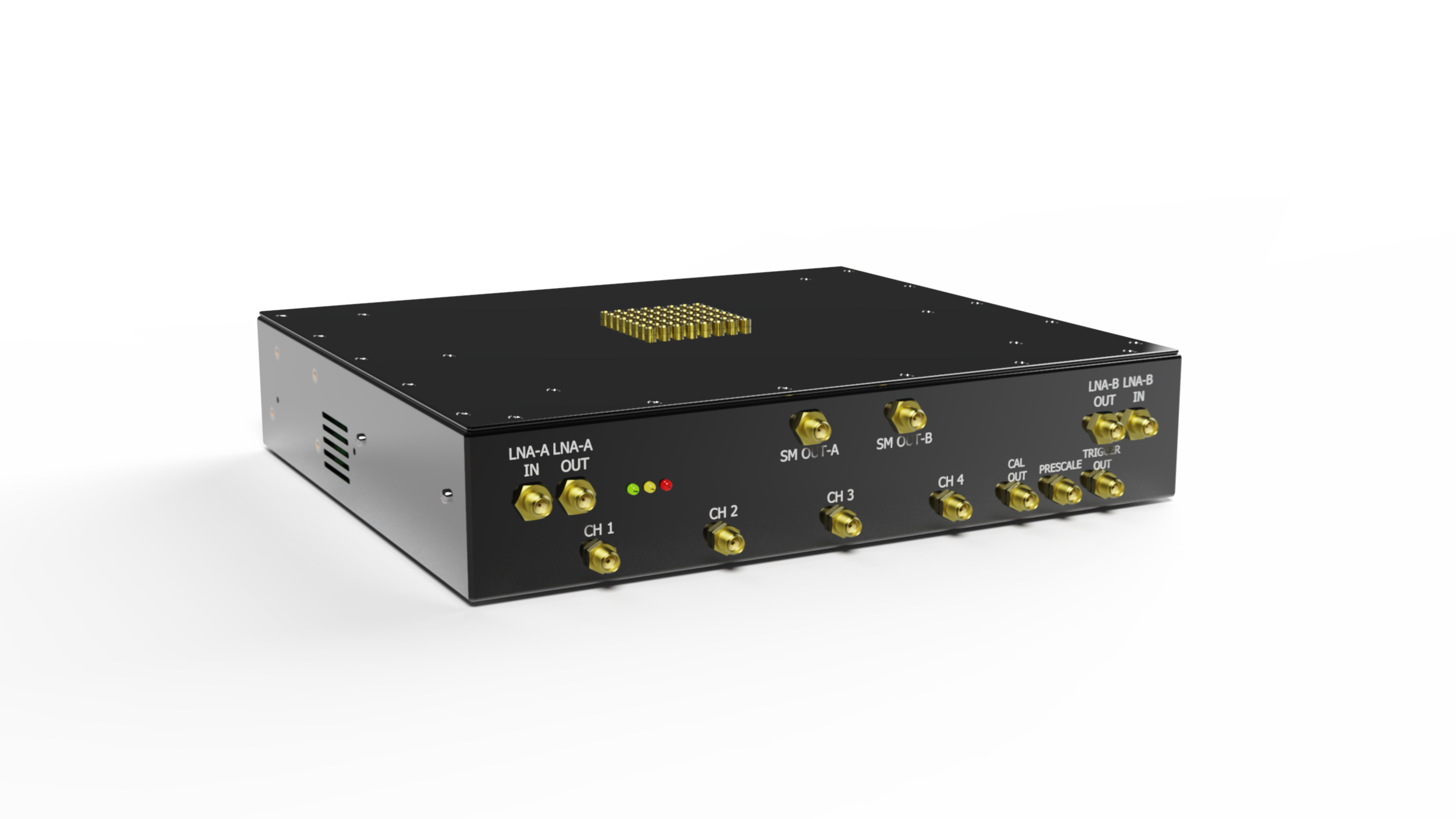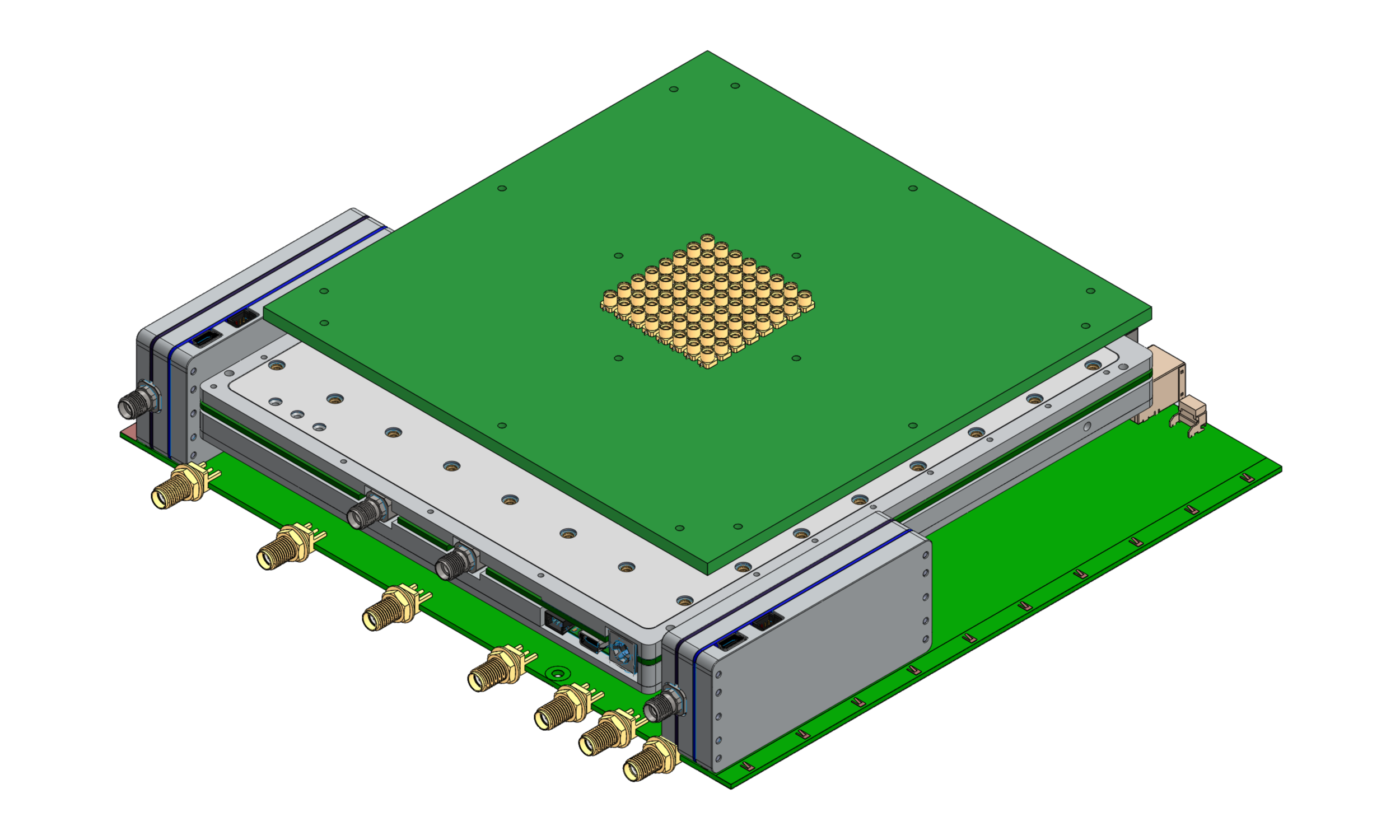Designing A Custom Electronics Enclosure For EECL
High-Speed RF Test Solution
Form Lab worked with EECL (European Engineering & Consultancy) in the development of a new Oscilloscope Diagnostic Tool, with our role in the project being to develop the housing for the internal electronic components. Our brief was to create a sheet metal steel enclosure which was lightweight and looked sleek, while also being simple to manufacture.
Our first step was to understand the components we would be working with. To do this, we started by placing all the required components in what we imagined would be the optimal position, and then creating a simple sheet metal box large enough to house all these components. This allowed us to then start to work out how we would mount / support particular components, what sorts of gap would be needed between different surfaces, how much space we would need for internal wiring & cooling, and establish some of the potential issues we thought we might face in the development process, in order to tackle them as early as possible.
Source: https://www.acinfinity.com/pages/technical-guides/cabinet-cooling-and-ventilation.html
Another key issue to tackle at the early stage was any additional hardware we may need to integrate into the casing. Included in this was fans for cooling the internal components. To help understand the optimal position to place the fans, we researched the optimal airflows for cooling enclosed cabinets.
As we developed the enclosure, it became clear we would need internal supports separate from the sheet metal pattern to hold & support key components. Due to the requirements for the enclosure to be lightweight, and the small batch size required for manufacture, it was decided 3D printing the required supports would be the best solution. This would also mean Form Lab would be able to produce these components in house if required. We produced a CAD design for the bracket shape required, and we carried out FEA to ensure the bracket design was fit for purpose.
Once we had developed a final design, we produced renderings of the completed CAD files in order to demonstrate the look of the final product. Form Lab also produced technical drawings for manufacture, and contacted suppliers from our network of industry contacts to get the final enclosure design manufactured.
Interested to see if Form Lab can help with your project? Get in touch to see if we can help!









